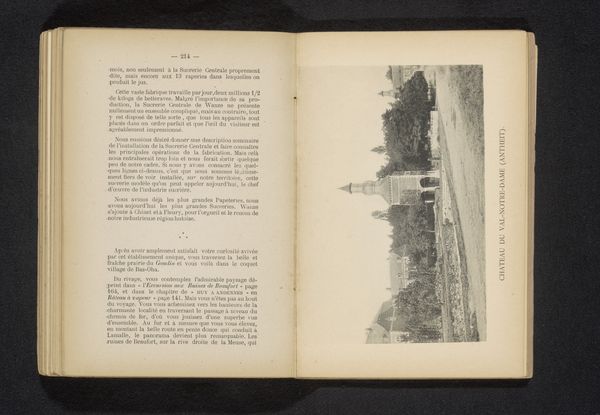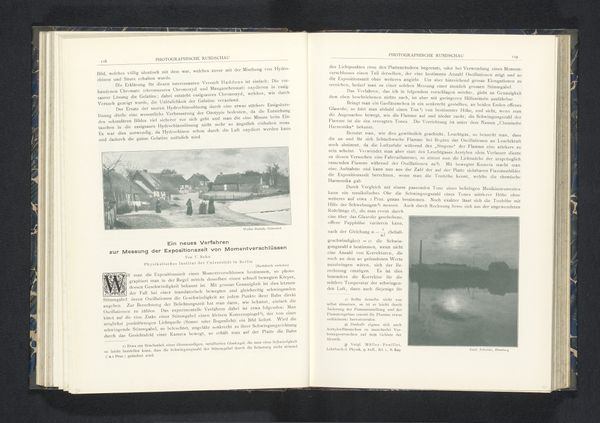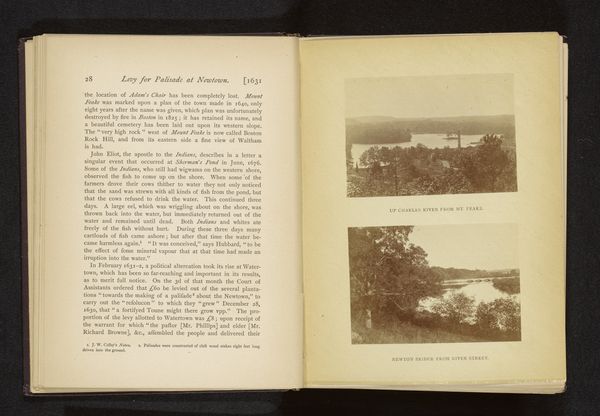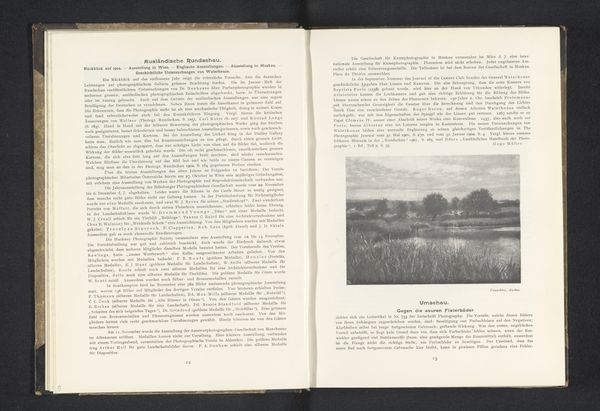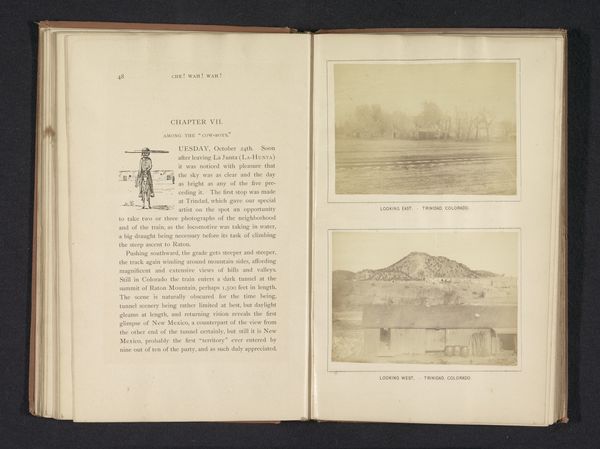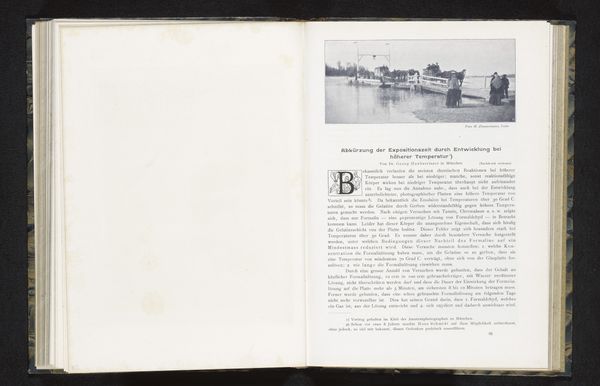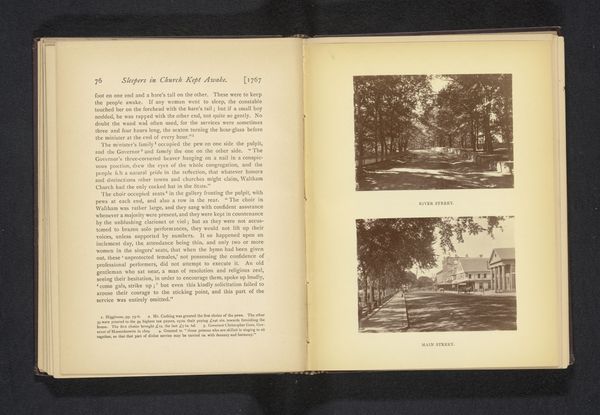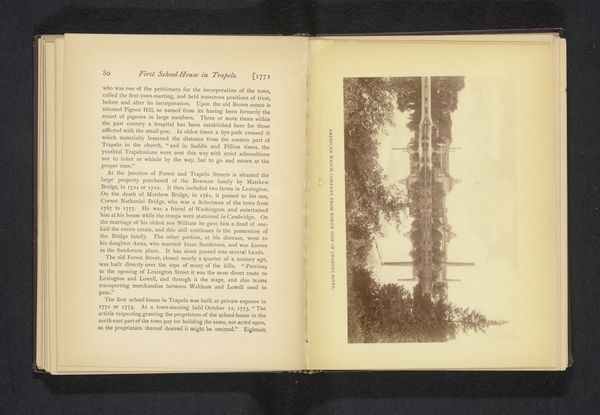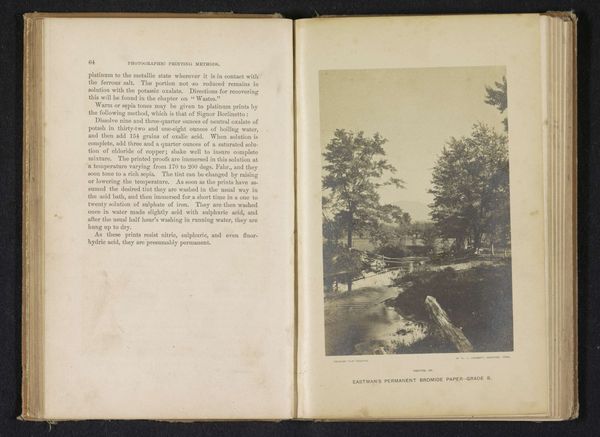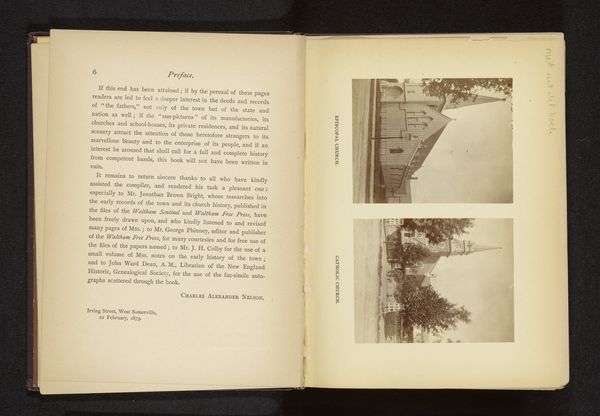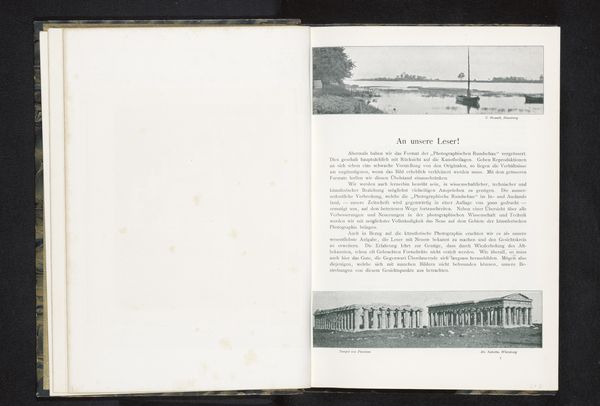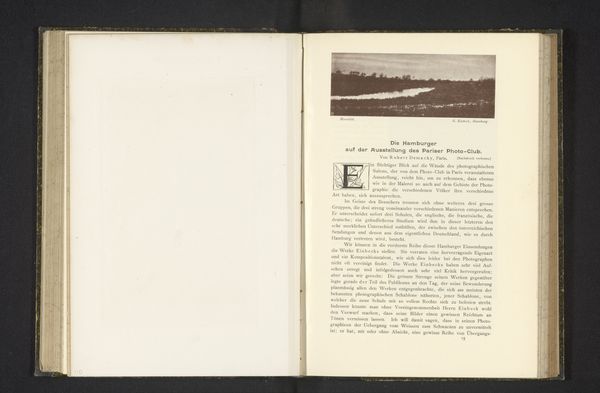
Tweemaal een gezicht op de Kathedraal en Abdijkerk van Sint-Albanus in Saint Albans before 1908
0:00
0:00
print, photography, albumen-print
#
paper non-digital material
# print
#
book
#
landscape
#
photography
#
cityscape
#
albumen-print
Dimensions: height 122 mm, width 84 mm
Copyright: Rijks Museum: Open Domain
Curator: We are looking at a page from what appears to be a vintage book. The artwork is "Tweemaal een gezicht op de Kathedraal en Abdijkerk van Sint-Albanus in Saint Albans" attributed to Arthur E. Smith, likely before 1908. It features two albumen prints side by side. Editor: Initially, the image evokes a feeling of faded grandeur, a quiet stillness. The sepia tones suggest a distant past. Curator: The image presents us with two views of St. Albans Cathedral. The upper illustration, according to the caption below the images in the book, depicts the abbey in the distance and is characterized as an "ordinary photograph," while the second, taken from essentially the same location, employs a "telephotographic" lens to achieve a detailed closeup. The layout of the book positions these contrasting photographs side-by-side, creating an interesting juxtaposition for viewers. Editor: It’s fascinating to consider the use of technology at the time, almost as if the photographer were engaging in surveillance or long distance observation. What were the intentions behind contrasting this regular photographic lens versus the telephotographic? Curator: It invites the viewer to consider perspective, scale, and distance – key aspects not only of visual representation, but of empire-building and the politics of space in the late 19th and early 20th centuries. This use of photography as it grew during England’s peak, demonstrates not only advancement of technology, but an advanced capacity to document expansion, places, and even capture power through this “telephotographic” technology. Editor: Absolutely. The strategic use of photography during this period highlights how technology served imperial interests. These advancements contributed to creating visual documentation, a method which often promoted colonialism through a new lens for those not physically there to experience the empire. Curator: Considering this photograph's context, in the context of a book excerpt called "Photographing the Stars," this brings a very literal approach of photographing a place but an almost theoretical way of the advancement of photography to allow for images and perspectives not previously available. Editor: Indeed. It raises important questions about representation, access, and the power dynamics inherent in viewing and documenting different subjects during that era. These visual media continue to be crucial. Curator: Looking at this reminds me to consider the technological advances and their impact on art and its accessibility. Editor: Yes, a fascinating glimpse into the past that spurs reflection on how technology and representation intersect to shape our understanding of history and current conversations.
Comments
No comments
Be the first to comment and join the conversation on the ultimate creative platform.
